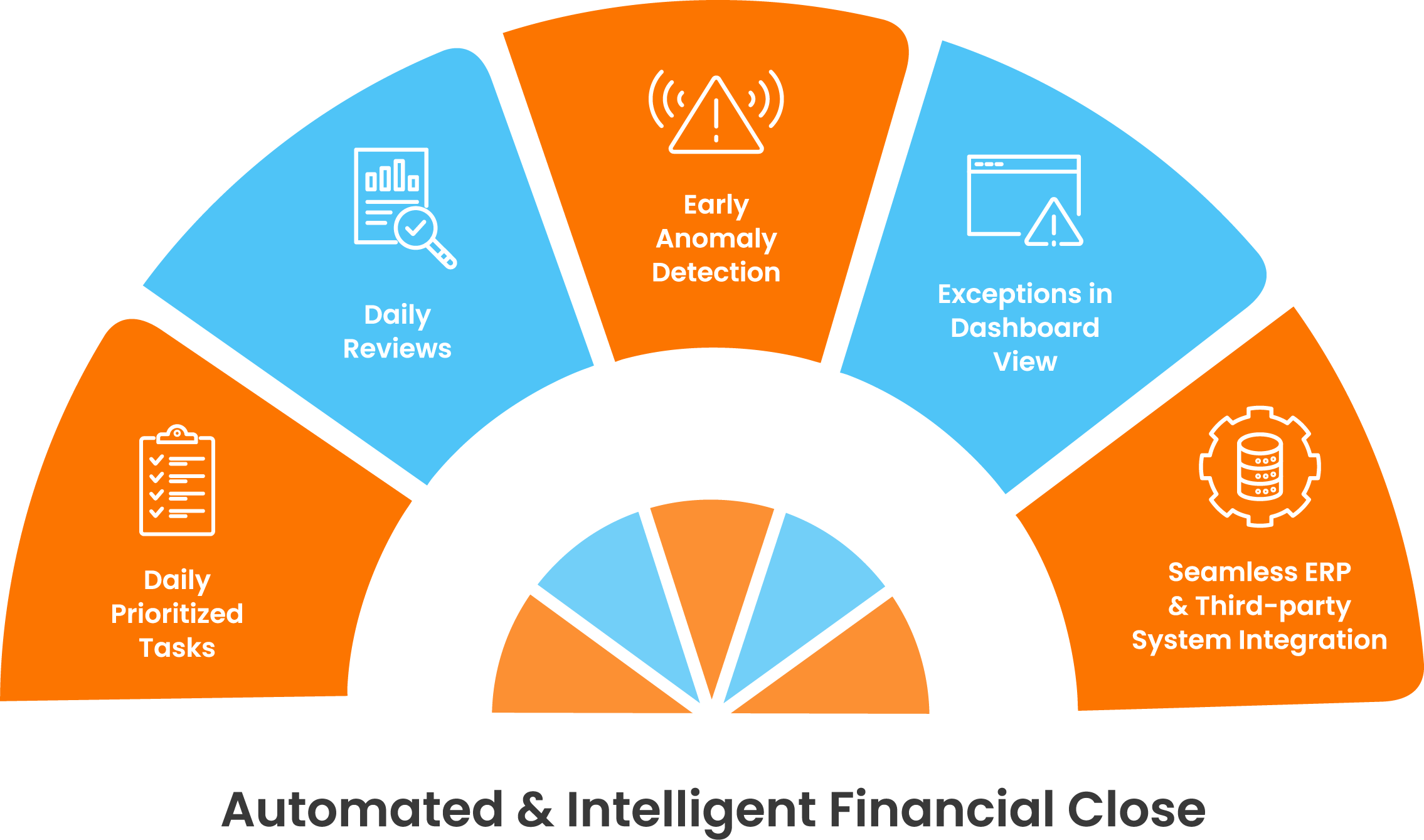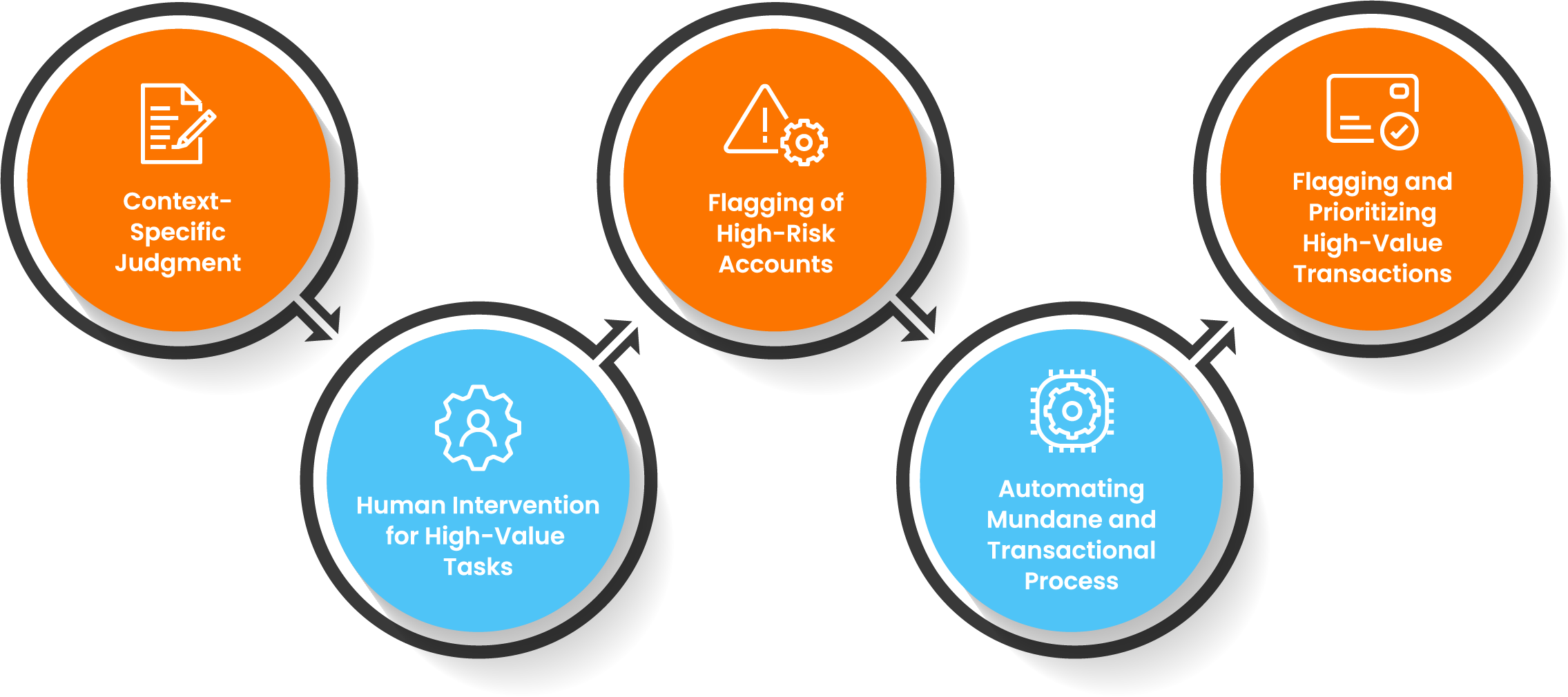Autonomous Accounting: Breaking The Mould For The Financial Close
Learn how CFOs need to reimagine automation and technology with autonomous accounting to achieve faster and smoother financial close.
Automation Lays The Foundation
Automation has improved these inefficiencies and helped companies manage risk. It can catch some of the errors that even the most eagle-eyed of employees might miss. However, it is not a panacea.

While automation can speed up the process, there will still be times when a finance department needs to step in and review a report or an anomaly if data can’t be recognized by the system. Accounting processes require more than just automation. They need to be autonomous, with artificial intelligence (AI) positioned as an integral part of the tech stack.

Reimagining finance with AI & Autonomous Operations
Reimagining financial processes as AI-driven, autonomous operations will transform the workforce. It will give teams the time and space needed to offer ideas, insights, and strategies to help companies grow.
A useful analogy is the autopilot function on a plane. Sensing airspeed,
altitude, direction and traffic improves efficiency and reduces fuel burn, but
the human judgment of a pilot is needed to ensure passenger safety.
The latest innovations in image-recognition AI mean a runway can be located, but still relies on human interaction to make important judgment calls such as communicating with air traffic control so they know when and where to land.
Much like the B2C revolution of Amazon, Netflix and Facebook, which have leveraged data-driven behavior to transform the client experience, autonomous software leverages AI-based anomaly detection to reduce or eliminate some of the repetitive tasks involved as part of the month-end close.
Autonomous accounting does not mean there is no human presence, it simply means that the human does not need to be the glue that holds the process together.
Finance Of The Future
Imagine the possibilities for finance in the future. An analyst arrives for work, and the system provides a list of prioritized tasks each day. Exceptions are clearly shown on a dashboard. These exceptions could be something such as flagging an invoice that may have been processed by an analyst and coded to the wrong account. Anomalies (errors and omissions) will be identified based on timing, GL code, and vendor information.
Close tasks will be automated by using a combination of intelligent automation tools and seamless integration of applications to enterprise resource planning software (ERP) and other third-party systems. Anomalies (errors and omissions) will be listed and a correcting journal entry will be suggested. Similarly, balance sheets will be constantly reviewed for variances and potential open items identified and resolved on a daily basis. Human judgment will still be an important factor to ensure there is business context, and any unique transactions can be identified and resolved with a high degree of confidence.

In the future, this AI-powered automation will allow accounting teams to close the books at the end of every day. Any issues with errors and omissions will be identified, assigned and resolved daily.
Making The Leap Of Faith
Given the benefits of this bright future, what is stopping organizations from embracing the necessary changes to make it a reality? Often data-quality issues, lack of a change management mindset and inability to build an ROI for a faster financial close are the main barriers.
What’s more, every organization will have different problems to overcome. Over time, AI will learn some of these patterns and behaviors, and make the necessary corrections along the way to increase efficiency, speed and productivity.
Developing An Automation-First Mindset
In the meantime, CFOs need to develop an automation-first mindset. This will allow the finance department to scale, with automation taking over mundane tasks and human intervention required only for tasks that require technical accounting skills or context-specific judgment.
How an automation-first mindset helps the financial close process

Here are a few key areas where, from a financial perspective, human judgment is still required:
- Unique or first-time customer transactions:
Machine learning will likely flag this as an anomaly as it has been programmed to look out for something it hasn’t seen before. In this example, human interaction is required to interpret this data to ensure the transaction is not fraudulent or unusual. Once this has been resolved and inputted back into the system, machine learning will ensure it isn’t flagged the next time it happens. - Transactions taking place against accounts flagged as high risk:
An account may have been flagged as high risk based on the industry it operates in, a history of potential fraud or a high volume of transactions. When a transaction occurs against these accounts, an exception is raised, which must be investigated further with manual judgment required. - High-value transactions posted close to month/period end:
These will be flagged as requiring further investigation to verify that the entry is genuine to ensure accounting cutoffs are adhered to.
Conclusion
The accounting industry is likely going to continue to evolve. All that said, outside of a few use cases, autonomous accounting already has transformational potential and is now more of a possibility than ever.

